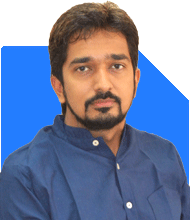hello sir, I am 51 years, I have a corpus of 1cr in mutual funds , 5 lacs in PPF , my PF is 25 lacs, KVP 10 lacs, monthly sip in mutual funds is 27000, daughter is employed and have set a side 40 lacs for her marriage , my son is still studies in Bcom hrs . 3rd years. have an agricultural land of worth 1 crores . Have three flats worth , 25 lacs 40 lacs and 80 lacs and the one i am living in is 20 lacs. I want to generate a corpus of 5cr at the age of 60. Apart from this I want to generte an extra income of around 1 lacs per month. from the age of 55. Prsently my income is 1lacs per month.
Ans: At 51, you have built a significant corpus. You’ve invested wisely in mutual funds, PPF, PF, KVP, and real estate. Your current situation includes:
Mutual Funds: Rs 1 crore, which is a substantial investment.
PPF: Rs 5 lakhs, a secure, tax-saving investment.
Provident Fund: Rs 25 lakhs, a reliable source of retirement income.
Kisan Vikas Patra (KVP): Rs 10 lakhs, providing safe and guaranteed returns.
Real Estate: Three flats worth Rs 25 lakhs, Rs 40 lakhs, and Rs 80 lakhs. Plus, the one you live in is worth Rs 20 lakhs.
Agricultural Land: Worth Rs 1 crore, a valuable asset.
You’ve also set aside Rs 40 lakhs for your daughter’s marriage, which is prudent planning. Your son is in his final year of B.Com, so his education is almost complete.
Assessment of Your Financial Goals
You have two main financial goals:
Building a Corpus of Rs 5 Crores by Age 60: This is your retirement goal.
Generating an Extra Income of Rs 1 Lakh per Month from Age 55: This will supplement your retirement.
Evaluating Your Investment Strategy
To achieve your goals, we need to assess and possibly enhance your current investment strategy.
Increasing Your SIP Contributions
Your current SIP of Rs 27,000 per month is good, but you may need to increase this amount to reach your Rs 5 crore target. Consider raising your SIP to Rs 50,000 or more. This will give your portfolio the boost it needs over the next 9 years.
Focus on Actively Managed Funds
It’s crucial to focus on actively managed mutual funds rather than index funds. Actively managed funds have the potential to outperform the market, especially over a long period. These funds are managed by experienced professionals who can make strategic decisions to maximize returns.
Review Your Asset Allocation
Your current allocation includes mutual funds, PPF, PF, KVP, and real estate. While these are good, it’s important to ensure your portfolio is well-diversified and aligned with your risk profile.
Equity Funds: Continue with your mutual fund investments, but ensure you are diversified across large-cap, mid-cap, and flexi-cap funds. This will balance risk and return.
Debt Funds: As you approach retirement, gradually increase your exposure to debt funds. These funds are less volatile and provide steady returns, which is essential for preserving capital as you near retirement.
Avoid Direct Funds: Direct funds may seem cost-effective, but regular funds offer the advantage of professional advice. Certified Financial Planners can guide you in selecting the best funds, tailored to your goals.
Consider Hybrid Funds
Hybrid funds, which invest in both equity and debt, can provide a balanced approach. They offer moderate growth with reduced risk, making them ideal as you get closer to retirement.
Generating an Extra Income of Rs 1 Lakh Per Month
To generate Rs 1 lakh per month from age 55, you need to create a reliable income stream.
Systematic Withdrawal Plans (SWPs)
SWPs from your mutual fund investments can provide a steady monthly income. This allows you to withdraw a fixed amount regularly, while the remaining investment continues to grow.
Dividend-Paying Mutual Funds
Consider investing in dividend-paying mutual funds. These funds distribute dividends regularly, providing you with an additional income stream. However, remember that dividends are subject to market performance and are not guaranteed.
Fixed Deposits and Debt Instruments
You can also consider placing a portion of your corpus in fixed deposits or debt instruments that provide regular interest income. While these offer lower returns, they are secure and can provide a steady income.
Tax Efficiency
As you plan for retirement, it’s important to keep tax efficiency in mind.
Long-Term Capital Gains (LTCG) Tax: Ensure your equity investments are held for more than one year to benefit from LTCG tax advantages.
Tax-Efficient Withdrawals: Plan your withdrawals in a tax-efficient manner. For example, SWPs are generally more tax-efficient than lump-sum withdrawals.
Managing Your Real Estate Assets
Your real estate assets are valuable, but they may not generate significant income unless sold or rented out. Since you’re not looking to invest further in real estate, consider the following:
Rent Out Your Flats: If you haven’t already, renting out your flats can provide additional monthly income. This income can be reinvested or saved for future needs.
Diversify Away from Real Estate: As you approach retirement, consider selling one or more properties. The proceeds can be reinvested in more liquid and income-generating assets like mutual funds or debt instruments.
Final Insights
You’ve done an excellent job of building a strong financial foundation. To reach your Rs 5 crore goal and generate Rs 1 lakh monthly income, consider increasing your SIP contributions, focusing on actively managed funds, and exploring hybrid and debt funds. Additionally, create a reliable income stream through SWPs, dividend-paying funds, and fixed deposits.
Keep in mind the importance of tax efficiency and gradually shift your focus from growth to capital preservation as you approach retirement. Regular reviews with a Certified Financial Planner will help you stay on track and adjust your strategy as needed.
Best Regards,
K. Ramalingam, MBA, CFP,
Chief Financial Planner,
www.holisticinvestment.in




























